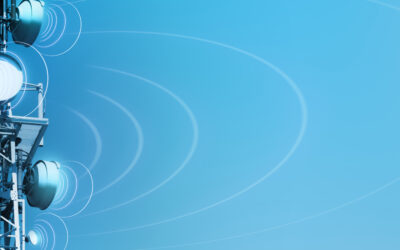The Future of Television Broadcasting Looks Bright

We have a new television transmission standard called ATSC 3.0, also known as NextGen TV, and I believe it will revitalize television broadcasting in a major way. Currently, all digital television stations in the United States operate with a signal transmission standard known as ATSC 1.0, and have been since 2008 or so. This transmission standard has a number of drawbacks, especially regarding the use of SFN/DTS.
A single frequency network (or SFN) is also called a distributed transmission system (DTS). An SFN node, or transmission facility, operates on the same channel as the main station and the FCC has a number of rules that must be followed in order to get an authorization for an SFN. These include a requirement that the SFN be located within either the main station’s service contour or an arc of a given distance within the main station’s transmitter site (103 kilometers for UHF television stations) and that the coverage of the SFN not extend much beyond the allowable area of the main station. In addition, the entire DTS facility (main and SFN nodes) must meet FCC interference criteria with respect to other co-channel and adjacent-channel stations.
A number of current television stations in the U.S. have tried to implement SFNs with their ATSC 1.0 facilities, but have found that they cause significant interference to the reception of the main station’s signal and have been shut down. In addition, an engineering firm conducted ATSC 1.0 SFN reception studies utilizing experimental facilities in NYC and concluded that they would not work without causing significant interference.
Within the last year the FCC has approved the use of the new ATSC 3.0 transmission standard by television stations in the U.S. This new standard significantly reduces or eliminates the inter-facility interference between SFNs and the main station’s signal. In order to receive the new ATSC 3.0 signal, a viewer will need to purchase a new ATSC 3.0-ready television set. There are already such sets on the market, but consumers are not rushing to buy them yet because in some markets, there are no stations that operate with the new ATSC 3.0 format. But, in many other major markets around the country, stations have applied to the FCC to convert to ATSC 3.0 and a number of them are currently operating with the new transmission standard. As more of these stations convert to ATSC 3.0, it will increase the receiver demands from the public which, in turn, will drive demand for other stations to convert.
There are consortiums of television station owners that are working together to bring ATSC 3.0 to various markets as quickly as possible. Here is a link that describes the make-up of one such consortium, Pearl: https://pearltv.com/about/. We do significant work for one of the major Pearl contributors. Fox, NBC and Univision are also committed to the conversion process. Our firm is very connected to the ATSC 3.0 conversion.
Presently, in most markets, one station elects to convert from ATSC 1.0 transmission to ATSC 3.0 transmission and files an application with the FCC to get authorization to do so. It works out an arrangement with one or more other stations in the same market whereby it carries their programming on the ATSC 3.0 station (called a “lighthouse” facility, since it presumably sends a beacon to viewers to go out and purchase an ATSC 3.0 receiver) while the ATSC 1.0 station carries the programming of the ATSC 3.0 station in the present 1.0 format. This way the “lighthouse” station doesn’t lose viewers in the process. Presumably, once receiver penetration is high enough, the other ATSC 1.0 stations convert to ATSC 3.0. Here is a link to the most recent update on ATSC 3.0 deployment: https://www.tvtechnology.com/news/atsc-30-deployments-where-and-when-will-nextgen-tv-be-available
There are tremendous business opportunities associated with operating in ATSC 3.0, and the FCC has just authorized such stations to provide internet service to viewers. ONEMedia conducted a webinar series over the summer/fall describing many of the business opportunities ATSC 3.0 presents: https://www.atsc3advocate.com/webinars.
Many of the business models rely on television viewers watching programming, datacasting and getting internet on phones, tablets and in their vehicles. Doing so requires
significant signal strength, which is why many ATSC 3.0 broadcasters are going to look at SFN nodes to provide this “densification” of signal. Because the SFNs can be engineered to not cause interference to the main station (and other SFN nodes in the DTS system) they can place them very close together, such as 1WTC and the ESB (there is no way you could make that work today with an ATSC 1.0 SFN). Indeed, some broadcasters are talking about placing multiple small-cell (40 watt ERP) facilities in urban areas in order to enhance the signal.
It is important to note that current FCC DTS rules do not include LPTV/Class A stations. While there are currently no FCC rules that allow for the operation of SFN/DTS facilities for LPTV/TV translators/Class A LPTV stations, I believe that there will be such rules promulgated in the next year or so.
The future of television broadcasting is embedded in ATSC 3.0 and SFNs!
Recent Posts
- RF Safety: The Silent Protector of Wireless Communication
- How RF Signal Generators Drive Effective Testing Practices
- How Radio Frequency (RF) Testing Enhances Connectivity and Reliability
- The Importance of RF Education in Today’s Tech Landscape
- What to Expect During a Radiofrequency Radiation Site Inspection?






